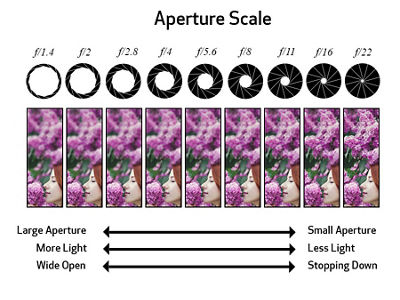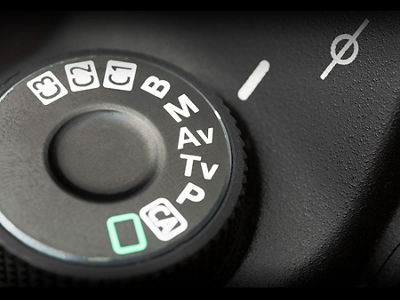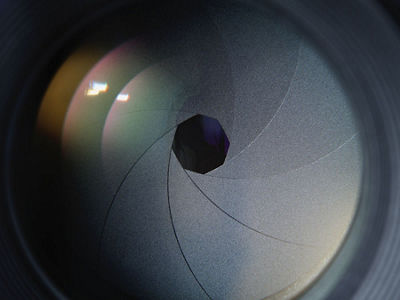What is Aperture in Photography?
Understanding the Basics
It’s said that in life, small changes can yield powerful results — and when it comes to photography, this concept rings true. Whether scouting out the perfect location or experimenting with an interchangeable lens, the choices we make, no matter how small, have the power to enhance and inspire our creative vision.
Just consider some of the elements that make a photograph striking: perhaps it’s the background blur framing a subject, or a sprawling landscape in super-sharp focus.
In photography, there are a number of minor tweaks that can add major impact to the look and feel of your images. Stepping away from your camera’s automatic mode (as scary as that sounds!) and challenging yourself to make small, but impactful changes is a great way to kick your skills into high gear.
What’s one of the easiest and arguably most important first steps? Understanding how aperture can play a major role in enhancing your photography.
What is Aperture?
Aperture is an adjustable opening inside your lens that allows light to pass through to the imaging sensor in the camera body. An easy way to visualize aperture is to think of it in terms of the human eye. What happens when we shine a flashlight onto the iris of our eye, and then quickly remove it? Our pupil dilates larger or smaller based upon the amount — and intensity — of light.
When capturing an image, aperture works in similar ways. In dimly-lit situations, for example, a larger aperture takes in more light — just as our eyes need a larger, more dilated pupil in order to view our surroundings better. Conversely, a smaller aperture, or smaller pupil size, is helpful when taking in bright, sunny conditions, where less light is needed to properly expose a scene.
In essence, aperture controls the amount and intensity of light affecting an image — so it should come as no surprise that gaining an understanding of how, why and when to use aperture can greatly strengthen and boost your photographic techniques.
F-Stop & Aperture: Understanding the Connection
To put this concept into practice, let’s discuss the connection between f-stop and aperture. When photographers refer to an f-stop or f-stop number, they are speaking directly about aperture. You might also hear phrases such as “opening up,” “stopping down” or “shooting wide open.” Put simply, these phrases all relate to the aperture’s ability to open wider or close smaller when letting in available light.
A large aperture (remember, large pupil size) is measured using a low f-stop number, such as f/1.4. When the maximum aperture (lowest f-stop number) is used, this is referred to as “shooting wide open” — essentially, letting in the most light possible. On the opposite end of the spectrum, a small aperture (remember, small pupil size) is measured using a high f-stop number, such as f/22. Since a small aperture takes in less light, you’ll be “stopping down” each time a higher f-stop number is used.
To help visualize the connection between f-stop and aperture, take a look at our diagram below:

Depth-of-Field & Aperture: Merging the Two
Aperture serves two very important functions. Not only does it control the amount and intensity of light affecting an image, but it also controls a scene’s depth-of-field — in other words, how much of the foreground and background are in focus.
Experimenting with varying apertures is a technique used by photographers to add dimension to a scene. A large aperture (low f-stop number) keeps a subject in sharp focus by blurring out the foreground and background, creating what’s known as bokeh in photography. This dreamy, romantic background blur is considered “shallow” depth-of-field and is achieved using low f-stop numbers, such as f/2. Large apertures are perfect for isolating your subject and eliminating distracting elements from a scene — a key component of portrait photography.
A small aperture (high f-stop number) produces “deep” depth-of-field — a term used to describe an image that displays sharp focus across the board, ranging from foreground to background. Small apertures, such as f/16 or f/22, are ideal when an entire landscape or group setting is the center of attention.

Creative Control & Aperture: Making the Switch to Aperture Priority Mode
Whether you’re experimenting with aperture for the first time, or simply honing your craft, learning to incorporate aperture into your photography routine is an excellent way to exercise greater creative control over your images.
Start small by switching from your camera’s automatic mode (it’s OK, we promise) to Aperture Priority mode, instead. Aperture Priority (Av) simplifies the exposure process by allowing you to practice with different f-stops. In Av mode, you set the aperture and your camera selects an appropriate shutter speed to correctly expose your shot — allowing you much more creative freedom, and ultimately, more fun.

Mastering the Fundamentals: Small Changes, Powerful Results
The bottom line? In life, and in photography, small changes can lead to bold, powerful results. By learning more about aperture — and how it affects elements such as light and depth-of-field — you’ll quickly discover that making small adjustments can greatly enhance the look of your images, and not to mention, elevate your skills in the process.



